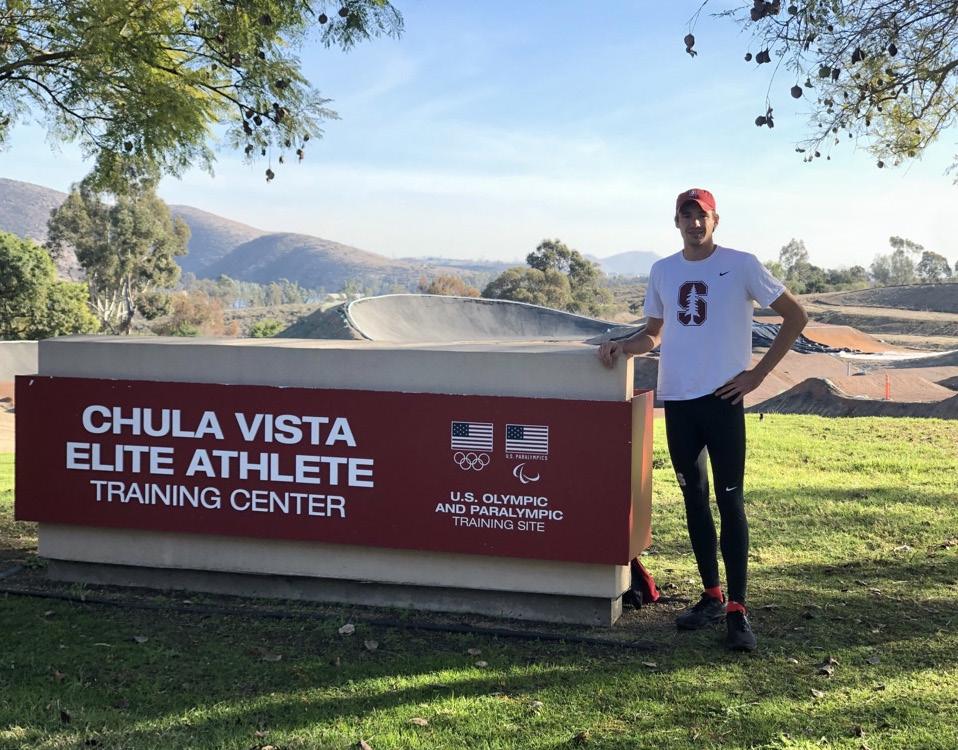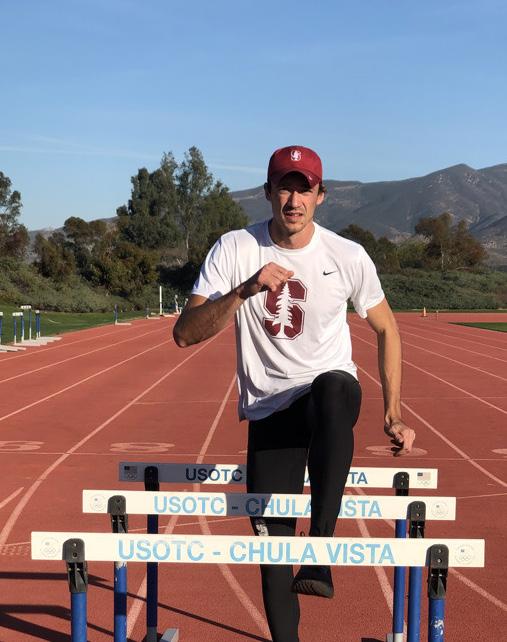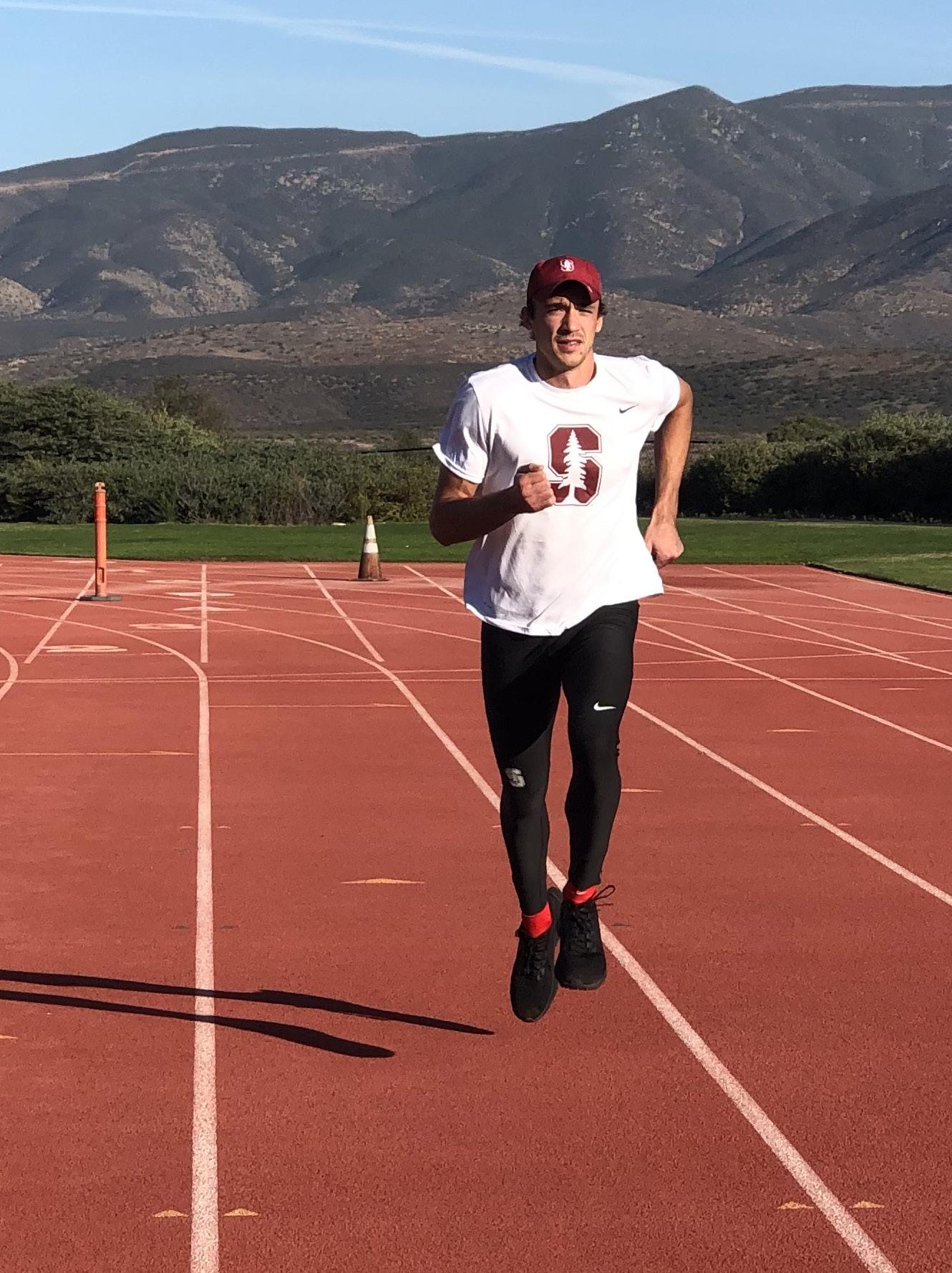
5 minute read
A Day in the Life at the Olympic Training Center
by Team USA Decathlete Harrison Williams
As a decathlete currently training at the Olympic Training Center in Chula Vista, CA, I am part of the residence program. USATF pays me to live in the dorms, eat at the dining hall, and prepare for the Olympics using the facilities. The OTC is a mini college campus for athletics. Everything you need to prepare for competition, including a track, weight room, dining hall, and training room, are within a 3-minute walk. What attracted me to live here was the ability to pretty much entirely focus on training. As you can see from my typical Monday schedule, this is probably one of the best places in the country to do so.
Advertisement
8:00 am Wake Up. I’ve had trouble sleeping for most of my life, but I’ve found that if I keep a consistent wake-up time, it’s a lot easier to fall asleep in the evening. Living at the OTC means I have a stable schedule each day, which makes it easier to keep a regular wake-up time. But it gets pretty tough to force myself to get up at 8:00 am on the weekends even though I have nothing to do those mornings. 8:30 am Breakfast at the Dining Hall. One of the biggest benefits of being on site at the OTC is having a dining hall only a short walk away. I usually stick to eggs, turkey bacon, and some oatmeal; nothing too heavy since I usually have training soon after.
8:45-10:00 am Hang Out. I like to have 1-2 hours after I eat to just hang out and let everything digest before practice. If I’m feeling particularly sore, I’ll do some light stretching to get ready for training. I don’t like to watch Netflix or play video games before practice because it distracts me, and I end up going into training with my mind somewhere else.
10:00-10:30 am Warm-Ups. The 30 minutes before practice is when I’ll do my event-specific pre-warmup routines. If it’s a hurdle day, I’ll grab my stretchy band and do some band distractions for my hip. If it’s a pole vault day, I’ll make sure to stretch out my hip flexor so I’m ready to hit some good positions at take off, and loosen up my shoulders a bit.



Photo credits: Trenten Merrill

Photos provided by Harrison Williams
10:30 am-1:00 pm Training Session #1.
This is when we get all of our technical work in on the track. As a decathlete I’ve got 10 events to train for, so we usually practice 2 events per day. On Mondays, it’s shot put then sprints. On pole vault days, we practice a bit later in the day, around 1 pm, because there’s always a big tailwind in the afternoon, and we want to take advantage of that.
A quick note– My mentality towards training has shifted a lot in the last year. For most of college, I focused on trying to make big improvements every day. As a result, I never felt like I was improving. I left practice disappointed most of the time. Recently, I’ve been trying to hone in on making small gains at each session. I’m not only enjoying training more, but the progress is coming more quickly.
1:00-2:30 pm Lunch and Rest. This is when I really like having my living quarters, a dining hall, and the track all in the same place. I can finish practice, grab food fast, then relax in my room until it’s time to lift. The dining hall food is not the best in the world, but the convenience of not having to worry about going to the grocery store, cooking something, and then cleaning all the dishes makes it worth it.
After lunch I take time to write a few notes about how practice went and how my body felt in my training journal. Maintaining a journal is important as an athlete because it helps you observe specific cues that helped you improve technically. You can monitor how you felt throughout the workout. It’s great to have something you can look back at to follow your progress.
2:30-4:00 pm – Training Session #2 - Lift. We have a great weight room setup at the OTC. We lift 3 days per week at the moment - Monday, Tuesday, and Friday. I don’t know too much about weightlifting, but luckily we’ve got some awesome strength coaches here who know what they’re doing. I do what they tell me. After we’re done lifting, I do core strengthening or pole vault-specific drills like Bubkas, rope climb, and hanging extensions.
4:00-6:00 pm Stretch and Mobility. This is a very important part of my day. If you don’t stretch and do mobility after training, you’re at a much higher risk for injury. And if you get hurt, you can’t work out.
Training breaks down your muscles and puts wear and tear on your joints. If you don’t stretch to make sure the muscle fibers heal in the correct direction, or move those joints around to keep them mobile, you’ll end up stiff, sore, and injury prone. I can’t stress enough how important this is. I’ll usually throw something on Netflix and do some mobility/stretching while watching.
6:00 pm Dinner. I usually eat at the dining hall. Occasionally if I’m tired of dining hall food, I might order something for delivery. Thanks to Covid-19, we’re not supposed to leave the OTC unless we really have to, so for the most part I stick to dining hall food since delivery can get expensive.
6:30-10:00 pm Free Time. There’s not much to do at the OTC, especially during a pandemic. I usually watch a movie or play video games. After training for 4-5 hours during the day, I need a mental break from track and field to keep myself from burning out.
10:00 pm Wind Down. I’m not someone who can just fall asleep as soon as their head hits the pillow, so I take time to relax. I usually read in bed for about an hour, then turn the light off at 11 pm. Sleep is absolutely the most important recovery tool you have as an athlete. I try to get 8-9 hours of sleep every night to make sure I’m ready for training the next day.
As you can see, life at the OTC can get pretty monotonous! As an athlete training for the Olympics, I need to focus on eating right, sleeping right, and training right, and living at the OTC eliminates a lot of distractions and really helps me do that. This lifestyle isn’t for everyone, but my goal is to represent the U.S. at the Olympics this year, and I am willing to do what it takes.










